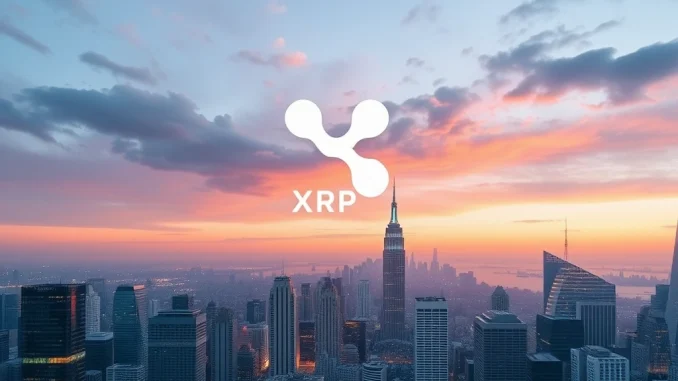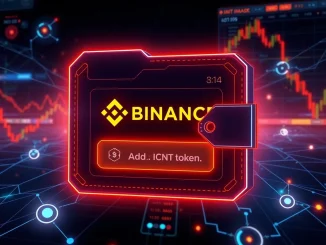
Exciting news for the XRP community and the world of digital payments! Ripple has officially integrated its highly anticipated RLUSD stablecoin into its own robust payment platform. This strategic move signals a significant leap forward in Ripple’s commitment to revolutionizing how money moves globally. But what exactly does this mean for users, businesses, and the future of finance? Let’s dive into the details of this groundbreaking integration.
Unveiling Ripple Stablecoin RLUSD: A New Era for XRP Payments
Ripple’s foray into the stablecoin arena with RLUSD is no surprise to those following the company’s trajectory. Designed to be pegged 1:1 with the US dollar, Ripple stablecoin, or RLUSD, offers the stability of traditional currency with the speed and efficiency of blockchain technology. This integration into Ripple’s payment platform is not just a product launch; it’s a strategic enhancement of the entire Ripple ecosystem.
According to a recent report from The Block, RLUSD is already being actively utilized by key Ripple clients in the payment sector. Cross-border payment giants BKK Forex and iSend are among the first to leverage the power of RLUSD for their services. This real-world adoption right out of the gate underscores the immediate utility and demand for a stable and efficient digital dollar within Ripple’s network.
Why is Ripple Integrating RLUSD into its Payment Platform?
The integration of Ripple stablecoin into their payment platform is a multifaceted strategic decision by Ripple, driven by several key factors:
- Enhanced Stability for Transactions: Stablecoins like RLUSD mitigate the price volatility often associated with cryptocurrencies like Bitcoin or Ethereum. This stability is crucial for businesses and individuals seeking predictable transaction costs, especially in cross-border payments.
- Faster and Cheaper Transactions: Leveraging the underlying blockchain technology, RLUSD transactions promise to be significantly faster and cheaper than traditional banking methods. This is particularly beneficial for international money transfers, where speed and cost-effectiveness are paramount.
- Expanding the XRP Ecosystem: While RLUSD is a distinct asset, its integration into Ripple’s platform strengthens the entire XRP ecosystem. It provides users with more options and use cases within the Ripple network, potentially driving further adoption of XRP and related technologies.
- Meeting Client Demand: As highlighted by the adoption of BKK Forex and iSend, there is a clear demand from Ripple’s clientele for stablecoin solutions within their payment infrastructure. Integrating RLUSD allows Ripple to directly address this demand and provide added value to its partners.
Cross-Border Payments Revolutionized: The RLUSD Advantage
The implications of RLUSD for cross-border payments are particularly significant. Traditional international money transfers can be slow, expensive, and cumbersome, often involving multiple intermediaries and hefty fees. RLUSD, powered by Ripple’s payment platform, offers a compelling alternative.
Consider the following benefits of using RLUSD for cross-border transactions:
| Feature | Traditional Cross-Border Payments | RLUSD Powered by Ripple |
|---|---|---|
| Transaction Speed | Days | Seconds |
| Transaction Fees | High (3-5% or more) | Significantly Lower |
| Transparency | Limited | High (Blockchain-based) |
| Accessibility | Bank account required | Potentially more accessible (depending on platform integration) |
As more clients gain access to this service, we can anticipate a noticeable shift in the efficiency and cost-effectiveness of global remittances and international business transactions. The integration of RLUSD is poised to streamline these processes, making them faster, cheaper, and more transparent.
Payment Platform Power-Up: What Does This Mean for Ripple’s Clients?
For Ripple’s clients, the integration of RLUSD into their payment platform represents a significant upgrade to their service offerings. Here’s what clients can expect:
- Expanded Service Portfolio: Clients can now offer stablecoin-based payment solutions to their own customers, broadening their service offerings and attracting a wider customer base.
- Competitive Edge: By leveraging the speed and cost-efficiency of RLUSD, clients can gain a competitive advantage in the increasingly demanding global payment landscape.
- Innovation and Future-Proofing: Adopting cutting-edge technologies like stablecoins demonstrates a commitment to innovation and positions clients at the forefront of the evolving financial industry.
- Simplified Integration: Ripple’s platform is designed for seamless integration, making it relatively straightforward for clients to incorporate RLUSD into their existing systems.
Looking Ahead: The Future of RLUSD and Ripple Payments
The integration of RLUSD into Ripple’s payment platform is just the beginning. As adoption grows and more clients come on board, we can expect to see further developments and innovations in this space. Potential future enhancements could include:
- Expansion to other stablecoins: Ripple may explore integrating other stablecoins pegged to different fiat currencies, further expanding its global reach.
- DeFi integrations: RLUSD could potentially be integrated into decentralized finance (DeFi) platforms, unlocking new opportunities for yield generation and financial services.
- Increased regulatory clarity: As regulatory frameworks for stablecoins evolve, RLUSD is well-positioned to benefit from increased clarity and potentially gain wider acceptance from institutions and regulators.
Conclusion: A Transformative Step for Ripple and Global Finance
Ripple’s integration of its Ripple stablecoin RLUSD into its payment platform is more than just a product update; it’s a transformative step towards a more efficient, accessible, and stable global financial system. By empowering its clients with the speed and stability of stablecoins for cross-border payments, Ripple is solidifying its position as a leader in the digital asset space and driving real-world utility for XRP and blockchain technology. The future of global payments is here, and it’s being built on innovation and strategic integrations like this.



